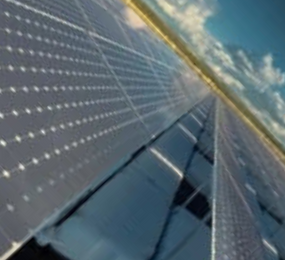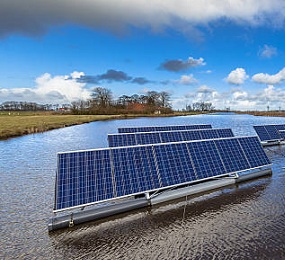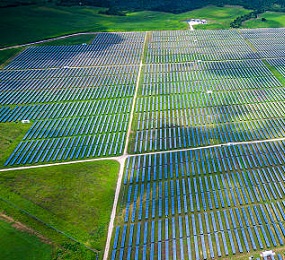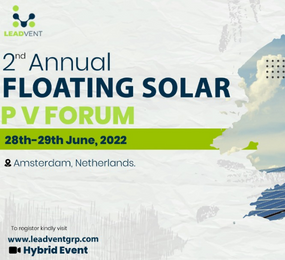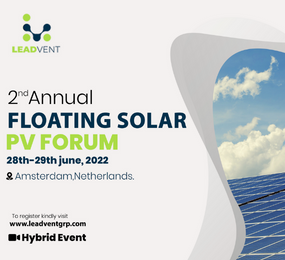Due to the fact that the Offshore floating PV system is still in the developing stage, there are many challenges and risks that are encountered when running the OFPV project. Investments in OFPV projects are still at bay due to the risks involved. However, Innovations have been going on in the technological aspects of the system to further reduce and eliminate the risks involved with its application.
Risk is involved when considering the effect of uncertainties on a subject matter and its involved consequences as a foreseeable occurrence. To be able to identify the risks involved for a particular system, these three questions must be answered correctly;
-
What can go wrong?
-
How likely is it to go wrong?
-
What are the consequences, if it goes run?
Risks Witnessed in OFPV
Some renewable energy system developments are still lagging behind due to their acceptance. The evaluation of complex issues like risks will help develop ways actually to prevent or eliminate such risks. When risks have been assessed and measured quantitatively, their solution will not be far-fetched if identified properly. All stakeholders involved in running any Offshore FPV project must have knowledge about the risk assessment and considerations on how to handle the circumstance. Striking a balance on matters that concerns the stakeholders are very paramount in policy-making. Each of the Stakeholder's opinions must be given a fair thought before any decision is made. The risk factors involved while running an OFPV project are divided into social, political, economical, technological, legal, and environmental factors
Political and Regulatory Risk
Policymakers regarding the operation and maintenance of OFPV systems are of different stages namely, the local, national and global. If the OFPV system involved is being managed by two or more countries then, the global policy bodies are required to handle the situation. Moreso, if the operations are done under a country’s jurisdiction, then National rules are applied to its operations, So basically, the location and the stakeholders involved in any OFPV project determine the professional bodies that will be involved. For instance, the European Commission’s involvement with the Paris Agreement on the renewable energy strategy on a European level. The United Nations (UN), International Energy Agency (IEA), and International Renewable Energy Agency (IRENA) are involved on a global level. Thus, the law guiding the OFPV operations and deployment are usually not the same and sometimes ambiguous. In addition, there is a risk of a change in policy that may affect the total project cost. For instance, Changes in tax credit or policies regarding permitting and interconnection will adversely affect the project cost.
Economic risks
OFPV is still in the development phase, making the industry not mature enough to handle some situations such as the case of financing a project. In most case scenarios, Investors are faced with several risks for producing the initial funding for the project. When economic feasibility is being considered, the best way to handle current OFPV deployments should be by using Subsidy as the cost for operation and maintenance (O&M), transport, installation, decommissioning, and insurance for any damage or failure of running an OFPV project still fluctuates and no clear view of the project cost is perceived except on assumptions/predictions which may backfire.
Social risks
Due to the OFPV deployment location, there could be theft attempts, sabotage, or even terrorist activities thereby increasing the maintenance costs. In some scenarios, It could even stop/haunt the project development until damages or stolen materials are replaced. Also, fishing and other marine activities are not left out of what could cause damage or failures to the OFPV system management.
Technological risks
Due to the emerging phase of FPV especially in the Offshore environment, several challenges and risks are experienced regarding the performance and safety of the OFPV system. The environment plays a major role in component failures and damages due to the effect of salt water, humidity, corrosion, wave, currents, object collision, and others. In addition, Manufacturing errors could also cause technical damage to the OFPV system as they might not be observed early enough. The technological risk incites the price cost of OFPV projects which includes warranty, liabilities, O&M as well as repair costs. For instance, The floating PV system incident at the Yamakura Dam in Japan where typhoon failure caused huge damage to the entire FPV installation. Notably, the shelf life of a normal FPV system is around 20 - 25 years but due to some unforeseeable or visible technological risks, the lifeline is being shortened.
Environmental risks
The marine environment where FPV systems are deployed is full of activities both natural and man-made such as water movements due to seabed activities or animals, current, waves, fishing activities, and others, they are also prone to natural disasters such as hurricanes, and volcanoes. The impact of these on the installation systems is very negative, especially on the mooring systems and cables located at the seabed. In addition, the large surface area of FPV systems, marine flora, and fauna(- biofouling) also contribute to its environmental risks.
Occupational risk
Working in the marine environment has its disadvantages and most OFPV operations are done manually. Engineers and other marine workers face a lot of occupational hazards pre and post-installation. The risks range from electric shock, eye problems due to staying underwater for a prolonged time, falls, and a lot others. Some of the workers engaging in the OFPV operations are sometimes not inexperienced in the field, which affects their productivity and service.
Other OFPV risks include transport and installation risks, construction risks, decommissioning risks, grid connection risks, and solar resource risks.
In conclusion, The above-mentioned risks pose a lot of hindrances and challenges in the OFPV energy system application worldwide so therefore, there is an urgent need to create best or suitable practices that could help to navigate through the issues raised. De-risking is a good tool used to avoid cost-consuming challenges while running any project.




